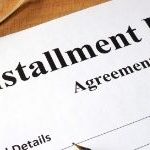Don’t be Trapped in Debt

There’s one 4-letter word that stings most people more than most – debt. For many folks, the constraints of a heavy debt burden are simply overwhelming. Debt prevents novel ideas from taking root, and if left unchecked can quickly spiral out of control. The emotions that accompany a debt-ridden lifestyle are destructive. Anxiety, helplessness, moodiness, and panic are commonplace. Fortunately, there are failsafe ways to emerge from debt and rebuild on a solid economic platform. The Internet is awash with 5-step solutions to emerging from debt, and they all carry an overarching theme: Strategically map out your income and expenses, build a blueprint, and initiate your plan of action.
Step 1 – Establish Where Are You at
Everything is clear when we look at it in the rearview mirror. However, when we are in debt things are murky. That’s why it’s important to establish where you are at financially as a starting point for your plan to emerge from debt. Avoid spiraling into an emotional quagmire by performing a few basic tasks. These include pulling your credit report (1 credit report is available from each of the credit ratings agencies per annum for free), checking your credit score and assessing the accuracy thereof. Note that there are 3 major ratings agencies in the United States, including TransUnion, Equifax and Experian. As a US citizen, resident or worker, you are entitled to a free credit report. FYI, most of us underestimate our total debt by as much as 20%.
Step 2 – Head Towards the Light
Debt is dark and dingy. That’s not where you want to be as an individual, or as an entrepreneur starting a new venture. For this reason, you should begin planning for an improved credit situation. Contact creditors and negotiate repayment terms. If your credit report indicates a severely damaged profile, you will be in a better position to negotiate with creditors and collections agencies. Contrary to popular belief, bankruptcy should not be your default option – it should be the final option on the table. While you are heading towards the light, it’s important to establish a budget and stick to it. This is step 3.
Step 3 – Make a Budget
Budgets are an anathema to many people. This is sad, because budgets are actually your most useful resource in managing your finances. If you have overextended yourself, it will be difficult to repay your debts and only more debt will accrue. To counter that, it’s important to minimize expenses and maximize incomes (if possible). While most people cannot increase their incomes willy-nilly, they are required to cut back on their expenses. Fortunately, there are many ways to reduce expenditure. One of them is eating out less, turning off boilers and lights when not in use, shopping around for car and auto insurance, and reducing expenditures on luxuries. There are many ways to cut back on mindless expenditure, and that money can go towards various plans of action.

Step 4 – Choose Your Debt Mitigation Plan
One way to make your budget work for you is debt consolidation. Other options include bankruptcy, credit counseling, and debt settlement. Debt consolidation is one of the most effective ways to get out of debt. Sure, every one of us wants to win a lottery, or be the recipient of a trust, possibly even the recipient of a fortune from a long lost relative. Sadly, those options are limited to a handful of people. Debt can be a troublesome reality in the absence of a workable strategy. With debt consolidation, you are effectively borrowing on one big loan to make payoffs on multiple other loans. The interest rate is typically lower on debt consolidation loans. It’s important to remember that debt consolidation is only applicable to unsecured debt – loans without assets backing them. Naturally, credit card debt is front and center when it comes to debt consolidation. If you are a holder of multiple credit cards, and you owe money on all of them, debt consolidation may be the most workable plan for your needs.
Step 5 – Pay and Re-establish Favourable Credit
Once you have a budget in place, and a plan to pay off your debt, it’s important to make those payments. The more you start paying into your debt consolidation plan, or simply to individual creditors, the better your credit report will reflect. It can take a long time for a poor credit score to improve, but every journey begins with the first step and in this case, it requires payment to show good faith and consistency.











